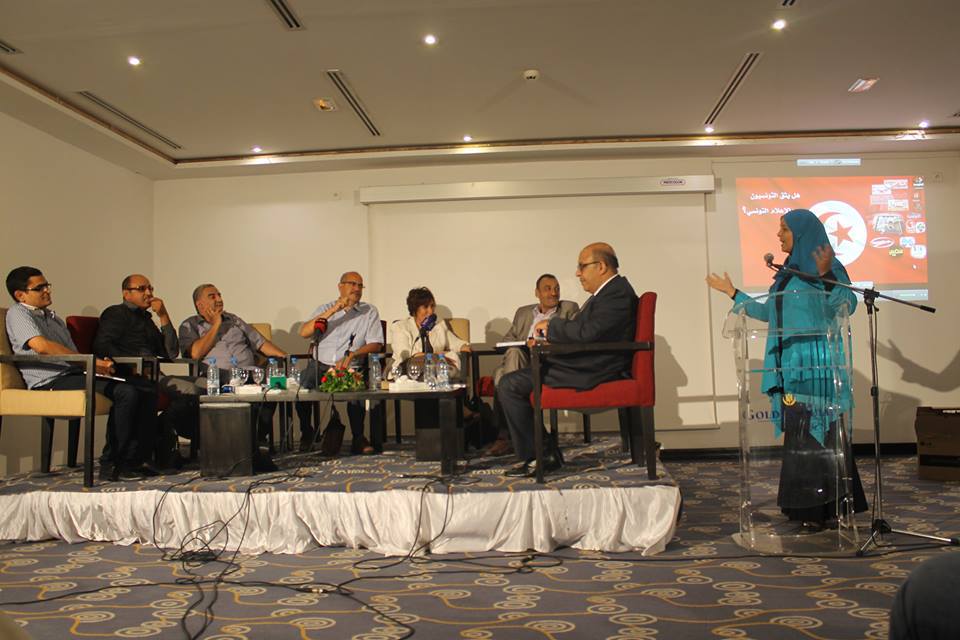In today’s rapidly evolving world, the Sustainable Development Goals (SDGs) have emerged as crucial benchmarks for global progress toward a sustainable future. These 17 interconnected goals, established by the United Nations in 2015, aim to address a wide range of social, economic, and environmental challenges by 2030. However, achieving these ambitious targets requires more than just good intentions; it necessitates a strategic approach that embraces data and analytics. Leveraging data and analytics for SDGs is not just an option—it’s essential for informed decision-making, resource allocation, and tracking progress. This article will explore how data and analytics can empower stakeholders at all levels to make impactful contributions toward the SDGs, focusing on insights derived from the platform https://sdg2030indonesia.org/. Posted by https://sdg2030indonesia.org/
Understanding the Role of Data in Achieving SDGs

Data serves as the backbone for accomplishing the SDGs, providing the necessary insights for effective planning, implementation, and evaluation. The significance of data cannot be understated, as it helps policymakers, NGOs, businesses, and civil society organizations understand the current landscape and identify gaps that need addressing.
The Importance of Accurate Data Collection
Accurate data collection is fundamental to understanding the challenges posed by each SDG. Without reliable information, it becomes extremely difficult to measure progress or implement strategies effectively.
Data collection methodologies vary widely across sectors and regions. For instance, administrative data gathered by governments can provide significant insights into public health, education, and economic indicators. Surveys and censuses also add richness to this data pool, enabling a nuanced view of societal issues.
However, the effectiveness of data collection hinges on how well these methodologies are designed and executed. Therefore, it is imperative that stakeholders invest in developing robust frameworks for data collection that involve local communities in the process. When people feel their voices matter, they are more likely to share accurate information.
The Power of Data-Driven Decision Making
Utilizing data effectively leads to data-driven decision making, which is critical for ensuring resources are directed efficiently. Organizations that leverage analytics can identify trends and patterns that might not be apparent through traditional methods.
For example, in Indonesia, various sectors such as agriculture, healthcare, and education can benefit immensely from predictive analytics. By employing algorithms and machine learning techniques, stakeholders can potentially forecast issues before they escalate, leading to preemptive actions. This proactive approach allows for better resource management and can significantly improve outcomes.
Moreover, when decisions are backed by credible data, they gain legitimacy and foster trust among citizens and stakeholders. This trust is vital for collaborative efforts aimed at achieving SDGs.
Visualization Techniques for Enhanced Understanding
The raw data generated can often be overwhelming and challenging to interpret. Data visualization techniques play a pivotal role in translating complex datasets into understandable formats, making it easier for decision-makers to grasp insights quickly.
Tools like interactive dashboards, infographics, and geographic information systems (GIS) can help illustrate trends and disparities effectively. For example, visualizations depicting the geographic distribution of poverty or access to clean water can empower local organizations to target interventions more accurately.
By transforming data into visual stories, stakeholders can engage a broader audience, including those without technical expertise. This democratization of data fosters a culture of transparency and accountability.
The Role of Technology in Data Analytics for SDGs

Technology is revolutionizing the way we collect, analyze, and utilize data. Advances in big data, cloud computing, and artificial intelligence (AI) are equipping organizations with the tools needed to tackle complex challenges associated with the SDGs.
Big Data: A Game Changer for Sustainability
The advent of big data has ushered in new possibilities for analyzing vast amounts of information. In the context of the SDGs, big data enables organizations to gather real-time insights from various sources, including social media, satellite imagery, and sensor networks.
These insights can inform policy decisions, improve service delivery, and even predict future challenges. For example, real-time monitoring of deforestation through satellite images allows environmental organizations to take immediate action against illegal logging activities, thus contributing to Goal 15: Life on Land.
Furthermore, big data analytics can enhance disaster response and recovery efforts. By analyzing historical data, authorities can identify vulnerable areas and allocate resources efficiently during natural disasters, aligning with SDG 11: Sustainable Cities and Communities.
Cloud Computing: Making Data Accessible
Cloud computing platforms have significantly transformed data accessibility and collaboration. Stakeholders can now store, access, and share data seamlessly across geographical boundaries.
This ease of access benefits various groups—government entities can share information with NGOs, private companies can collaborate with researchers, and local communities can participate in data collection efforts. The result is a more integrated approach to achieving the SDGs.
Additionally, cloud-based solutions often come equipped with analytical tools, allowing users to derive insights without needing extensive IT infrastructure. This democratization of technology means that even smaller organizations can harness the power of data and analytics to contribute meaningfully to the SDGs.
Artificial Intelligence: Enhancing Predictive Capabilities
Artificial Intelligence (AI) has the potential to revolutionize the way data is analyzed and processed. Machine learning algorithms can sift through enormous datasets to uncover hidden patterns and correlations.
In the realm of healthcare, AI can predict disease outbreaks by analyzing social media data and other indicators. This capability allows public health officials to mobilize resources proactively, reducing the impact of diseases and aligning with SDG 3: Good Health and Well-being.
Moreover, AI-powered chatbots can streamline communication between organizations and the communities they serve, facilitating data collection and feedback mechanisms. This two-way communication enhances engagement and empowers individuals to participate in the SDG journey actively.
Collaborative Platforms and Networks for Data Sharing

Collaboration is indispensable in leveraging data and analytics for the SDGs. Various platforms and networks facilitate knowledge sharing and collective action toward sustainability.
The Role of Online Platforms
The emergence of online platforms dedicated to the SDGs plays a crucial role in fostering collaboration among diverse stakeholders. Websites like https://sdg2030indonesia.org/ serve as valuable resources for organizations seeking to align their initiatives with the SDGs.
These platforms often provide access to relevant data, case studies, and best practices, allowing organizations to learn from one another. Additionally, they establish a space for dialogue, encouraging partnerships and joint initiatives.
By pooling resources and knowledge, stakeholders can amplify their efforts and create a more significant impact. Whether it’s a small NGO working on clean water access or a large corporation aiming for responsible production, collaborative platforms can support all players in achieving their goals.
Building Local Networks for Data Sharing
While global platforms are vital, local networks should also be nurtured to ensure that grassroots perspectives are included in the conversation. Local organizations often possess valuable insights regarding the unique challenges faced by their communities.
Establishing local data-sharing networks enables community members, NGOs, and government agencies to collaborate effectively. As a result, these networks can generate localized data that reflects specific needs and priorities, allowing for tailored interventions.
Participatory data collection methods—such as community-led surveys—can empower residents to voice their concerns and contribute to the data ecosystem. This approach not only enriches the data pool but also strengthens community ties and fosters ownership of local development initiatives.
Engaging the Private Sector
The private sector has a pivotal role to play in leveraging data and analytics for SDGs. Corporations can utilize their resources, technologies, and expertise to contribute to sustainable development efforts.
By partnering with NGOs and governmental organizations, businesses can share data and insights that enhance collective impact. For instance, companies involved in supply chain management can provide data related to their sourcing practices, helping to address issues of ethical consumption and production.
Moreover, corporations can utilize their analytics capabilities to optimize processes and reduce waste, aligning with multiple SDGs. Engaging the private sector not only amplifies resources but also encourages innovation, creating win-win scenarios for both businesses and communities.
Best Practices for Data Utilization in SDGs

As organizations embark on their journeys to leverage data and analytics for the SDGs, several best practices can guide them toward success.
Prioritizing Data Quality and Integrity
Data quality is paramount for effective analysis. Stakeholders must prioritize data integrity by implementing rigorous validation and verification processes. Reliable data ensures that decisions made based on it are sound and lead to desirable outcomes.
Organizations should also invest in training personnel on data management practices, ensuring that everyone understands the importance of quality data. By fostering a culture centered around data integrity, organizations can build credibility and trust with their stakeholders.
Ensuring Ethical Use of Data
With the increasing availability of data comes the responsibility to use it ethically. Privacy concerns and data misuse can undermine public trust and hinder participation in data collection efforts.
Organizations should establish clear guidelines for data usage, ensuring that individuals’ rights are respected. Transparency in data collection processes can alleviate concerns and encourage communities to engage willingly.
Moreover, stakeholders should be mindful of biases in data interpretation, striving for objectivity. Incorporating diverse perspectives in data analysis can help mitigate bias, leading to more equitable outcomes.
Continuous Monitoring and Evaluation
Monitoring and evaluating progress toward the SDGs is essential for determining the effectiveness of implemented strategies. Organizations should establish frameworks for continuous assessment, allowing them to adapt and refine their approaches as needed.
Leveraging data analytics tools can streamline the evaluation process, enabling organizations to analyze performance metrics and track changes over time. Regular reporting on progress fosters accountability and helps maintain momentum in the pursuit of the SDGs.
Fostering a Culture of Collaboration and Learning
Cultivating a culture of collaboration and learning is vital for maximizing the impact of data and analytics. Organizations should actively seek opportunities for knowledge sharing, whether through workshops, conferences, or online forums.
Encouraging teams to learn from both successes and failures creates an environment where innovation thrives. As stakeholders engage with one another, they can collectively develop new strategies and approaches that better align with the SDGs.
FAQs

What are the Sustainable Development Goals (SDGs)?
The Sustainable Development Goals (SDGs) are a set of 17 global objectives established by the United Nations in 2015 to address pressing social, economic, and environmental challenges by 2030.
How can data analytics contribute to achieving the SDGs?
Data analytics provides actionable insights that aid in decision-making, resource allocation, and performance monitoring, thereby enhancing strategies to achieve the SDGs.
Why is collaboration important for leveraging data and analytics for SDGs?
Collaboration promotes knowledge sharing, resource pooling, and collective action among various stakeholders, leading to more effective and inclusive approaches to achieving the SDGs.
What technologies are instrumental in data analytics for SDGs?
Key technologies include big data, cloud computing, and artificial intelligence, which provide powerful tools for collecting, processing, and analyzing vast amounts of data efficiently.
How can organizations ensure ethical use of data in SDGs initiatives?
Organizations should establish guidelines for data usage, prioritize privacy, and promote transparency to build trust and encourage community participation in data collection efforts.
Conclusion
Leveraging data and analytics for SDGs is no longer optional but essential for driving sustainable development. The integration of robust data collection methods, innovative technologies, collaborative platforms, and best practices offers a comprehensive framework for stakeholders to navigate the complexities of the SDGs. As we move closer to the 2030 deadline, it is imperative that all actors—governments, businesses, NGOs, and communities—embrace the power of data to inform their actions and amplify their impact. By harnessing the potential of data and analytics, we can build a sustainable future that leaves no one behind.






